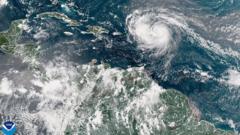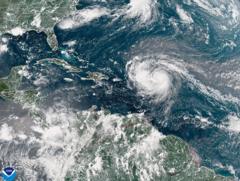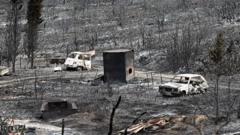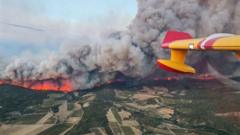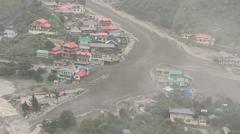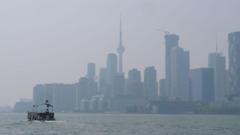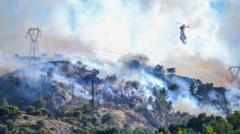As Hurricane Erin intensifies to a Category 4 storm, it poses significant risks of life-threatening waves and rip tides along the eastern seaboard of the United States. The storm, which is currently unleashing rains upon the southeastern Bahamas and the Turk and Caicos Islands, is not forecasted to make landfall but is expected to deliver rainfall of up to six inches (15.2 cm). This is the first hurricane of the 2025 Atlantic season, with Erin having initially reached Category 5 status before briefly weakening. The storm has already contributed to widespread power outages in Puerto Rico, impacting over 150,000 residents; however, local energy company Luma reported that emergency repair efforts restored electricity to 95% of affected customers by Sunday evening.
Hurricane Erin Intensifies, Threatening East Coast with Deadly Waves

Hurricane Erin Intensifies, Threatening East Coast with Deadly Waves
Hurricane Erin has escalated to a Category 4 storm, causing potential hazards along the US East Coast due to dangerous surf and rip currents.
The Bahamas are under the influence of Erin's outer rain bands, prompting the country's Disaster Risk Management Authority to advise residents to prepare for possible shelter needs. Aarone Sargent, managing director of the authority, emphasized the unpredictability of hurricanes, advising Bahamians to familiarize themselves with nearby shelters. The National Hurricane Center (NHC) indicates that Erin will pass off the southeastern Bahamas and curve to the north between Bermuda and the US East Coast mid-week. Despite not making landfall, Erin remains classified as a large and dangerous hurricane, with the Outer Banks in North Carolina preparing for potentially severe conditions. Mandatory evacuations have been ordered for Hatteras Island, amid concerns that key routes may soon become impassable. Forecasters are also alerting the entire East Coast about the risk of hazardous rip tides linked to the storm's approach.


